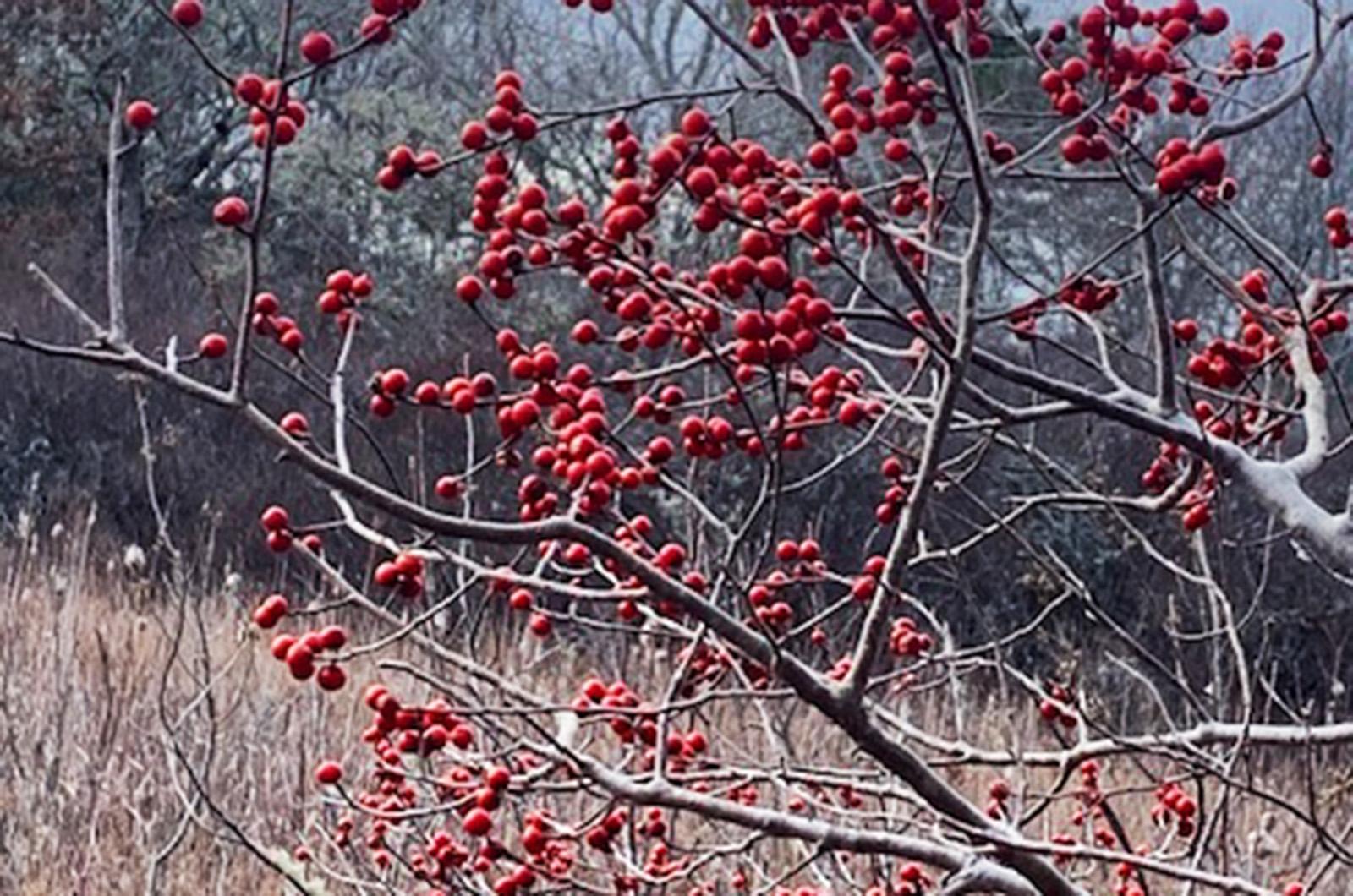What exactly was she up to?
On a West Tisbury roadside, a woman with clippers in hand was reaching into a red-berried bush. It would be obvious to any holiday lover that she was on a decorating binge and needed a splash of color for her seasonal swag.
You can call her the winterberry bandit, but you can’t blame her for her botanical taste. Winterberries are the most stunning of the season’s flora, with their bunches of bright red berries standing in stark contrast to the gray landscape of winter woodlands.
The bandit was in good company in her desire for those featured fruits. The competition would be the 48 or so species of birds that enjoy the taste of these berries, more correctly called drupes. Interestingly, these fruits are only marginally useful to migrating birds, as they are initially quite hard. They persist on the twigs, though, and after a few freeze and thaw cycles, the drupes become softer and more palatable to the birds that remain through the off-season.
Winterberry — scientific name: ilex verticulata — is also called winterberry holly, black alder, Canadian holly, coralberry, Michigan holly, brook alder and feverbush. That last alias alludes to medicinal qualities known by Indigenous tribes.
However, take note: many sources point out that the fruit and much of the plant is toxic to people, pets and livestock because of the presence of a toxic alkaloid, theobromine, that can cause serious health concerns when ingested. Regardless, the leaves are sometimes used dried to brew a caffeine-free tea. Indigenous knowledge runs deep and they knew quite well how to safely use this plant.
Some wildlife — and, as we have seen, wild pruners — can’t live without winterberry. The hoary elfin butterfly requires it for its larval food source and the cellophane bee is what’s called a specialist, in that is relies on plants from this genus exclusively. In the spring and summer seasons, birds flit in and out of the multi-branched shrub, which well serves their placement of nests.
Find winterberry near water, as it prefers wet areas and even coastal edges to support its growth. Because of woody root stems that send up multiple shoots, the plant has a shrub-like appearance.
In order to produce those colorful fruits, there must be both male and female plants in pretty close proximity, usually within 50 feet. One male, however, can service up to 10 females, as long as there are insects to cross-pollinate them — another reason to preserve our sometimes-maligned insects. This type of separate-sexed plant proclivity is called dioecious.
Members of the genus ilex can be deciduous or evergreen, as we know from other popular holly varieties. Winterberry is of the former, and the fruit clusters stand on naked stems after the leaves fall, making them appear even more striking. In some ways, it is curious that holly achieved all the fame it did at the expense of the equally impressive and persistent red winterberry.
Many cultivars have proliferated, though the original wild type was named and studied by 19th-century botanist Asa Grey. Considered the most important American botanist of his time, he hobnobbed with Darwin and others and wrote “the” botanical book of its time, Grey’s Manual of Botany. A Massachusetts resident for much of his life, he taught at Harvard and found his final resting place at Mount Auburn Cemetery in Cambridge where you can visit him and the Asa Gray Garden named in his honor.
Given the inspiration and beauty of this plant, it is hard to blame that roadside plant pilferer, though I definitely don’t recommend that we all take our shears to Island wild lands. Even with careful cutting and cautious amounts of clipping, winterberry is best left as nature’s adornments for all of us to enjoy.
Suzan Bellincampi is Islands director for Felix Neck Wildlife Sanctuary in Edgartown and the Nantucket Wildlife Sanctuaries. She is also the author of Martha’s Vineyard: A Field Guide to Island Nature and The Nature of Martha’s Vineyard.




Comments
Comment policy »